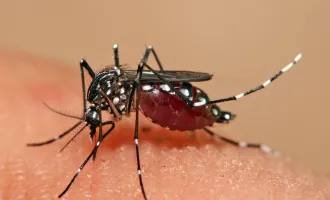
Personal Connection Is the Key to Leadership for Surgery Chair
During the White Coat Ceremony for the School of Medicine’s Class of 2016, Dr. Nancy Ascher, Chair of Surgery, delivered the keynote speech. Not only was it our first UCSF White Coat Ceremony, but it was Dr. Ascher’s as well.
We learned that before coming to UCSF to start the liver transplant program, Dr. Ascher served as Chief of Transplantation at the University of Minnesota and that under her leadership in the 1980s, the university dramatically improved its transplant survival rate.
After hearing this, I became curious as to what made Dr. Ascher such an effective leader. How did she accomplish such a feat?
At our White Coat Ceremony, Dr. Ascher seemed like a distinguished and distant professor, out of reach and out of sight to first-year medical students.
Now, several months into medical school, during which Dr. Ascher has offered her time and her home to support medical students, I have discovered that Dr. Ascher is an effective leader because although she holds executive and big-picture responsibilities as Chair of Surgery, she stays directly connected to her community, to her colleagues, to students and to patients.
In 1988, UCSF recruited Dr. Ascher and Dr. John Roberts, her husband and UCSF’s current Chief of Transplantation, to start a liver transplant program. Dr. Ascher created a foundation for the transplant program by working closely with her colleagues and team members. Her colleagues describe her as someone with “the vision to stay one step ahead.”
Part of what Dr. Ascher foresaw in 1988 and what is a reality today is a transplant program filled with “people really dedicated to one thing.”
“We have experts in surgery, liver disease, transplant, and nursing,” she said, “all of whom are interested in one thing — the best experience and life expectancy for our patients.”
By 2011, UCSF had achieved a survival rate for a one-year post-transplant of 93 percent for those who had received an implant from a deceased donor, and 94.7 percent for living donor transplants. These values are well above the expected rate of 88.4 percent for both.
Dr. Ascher notes that her programs’ successes were not built overnight. She remembers how demoralizing it was to deal with survival rates as low as 20 percent, but over time, incremental changes contributed to great outcomes. Dr. Ascher describes UCSF as having “a critical mass of people and patients that attract research and continues to build upon itself.”
She emphasizes that a great medical service needs health care providers working together and connecting over the most important subject, the patient’s experience.
Dr. Ascher excels as her role as Chair of Surgery, not only for her inexplicable foresight, but because she stays connected to trainees and students. This year, Dr. Ascher received the Francis Moore Excellence in Mentorship in the Field of Transplantation Surgery Award from the American Society of Transplant Surgeons.
Residents and fellows noted that Dr. Ascher is an effective mentor because she treats them like colleagues and not just trainees. Residents and fellows felt “immersed and integral in the program which empowered them and helped their growth.”
Dr. Ascher emphasizes that a meaningful mentor-mentee relationship allows an honest exchange about the student’s career path and the mentor’s willingness to be that student’s advocate.
But how personal can a mentorship be, or is it strictly a professional relationship? Dr. Ascher believes that “elements of caring, friendship come from a good mentorship.” However, she acknowledges the fine line that exists to protect the privacy and separate personal lives of the mentor and mentee.
The role of an effective mentor is not to judge the mentee but to get to know the student, so that the mentor can advise the student appropriately. Opening up to a mentor helps students understand what’s realistic and reasonable for them.
So, what should students do when they meet a potential mentor for the first time? Tips from Dr. Ascher include: “This is your time to give your ‘elevator speech,’ a two- to three-minute introduction to what’s unique about you. Then, it’s completely fine to ask questions about their general experience in their field, work-life balance, and how they got from A to B.”
Furthermore, mentors can guide students by encouraging them to learn from mistakes. This may be a surprise to people not in surgery, but the culture of surgery embraces opening up about their struggles.
For example, regular Mortality and Morbidity conferences bring together surgical teams to reflect on recent mistakes made. By acknowledging areas of improvement in front of trainees, mentors and attendings create an environment that encourages learning from mistakes.
Although it’s expected that “you don’t make the same mistake twice,” when we fail, we have an opportunity to change and become a better doctor, according to Dr. Ascher.
Dr. Ascher effectively directs the Department of Surgery by staying connected to her colleagues and her students. However, she continues to be a thoughtful leader by staying connected to patients, no matter how high she ascends in the administration.
Not only is Dr. Ascher ranked in the top 1 percent of transplant surgeons in the nation, but she is a living donor as well.
Three years ago, her older sister urgently needed a kidney transplant. Initially, her brother stepped up to be the donor. But because of complications, Dr. Ascher was the only sibling compatible with her sister.
“My motivation was to help my sister,” she said. “But I also feel that those of us in transplant advocate for live donor transplant all the time. I felt that if I’m giving that advice, I should be willing to take that advice.”


